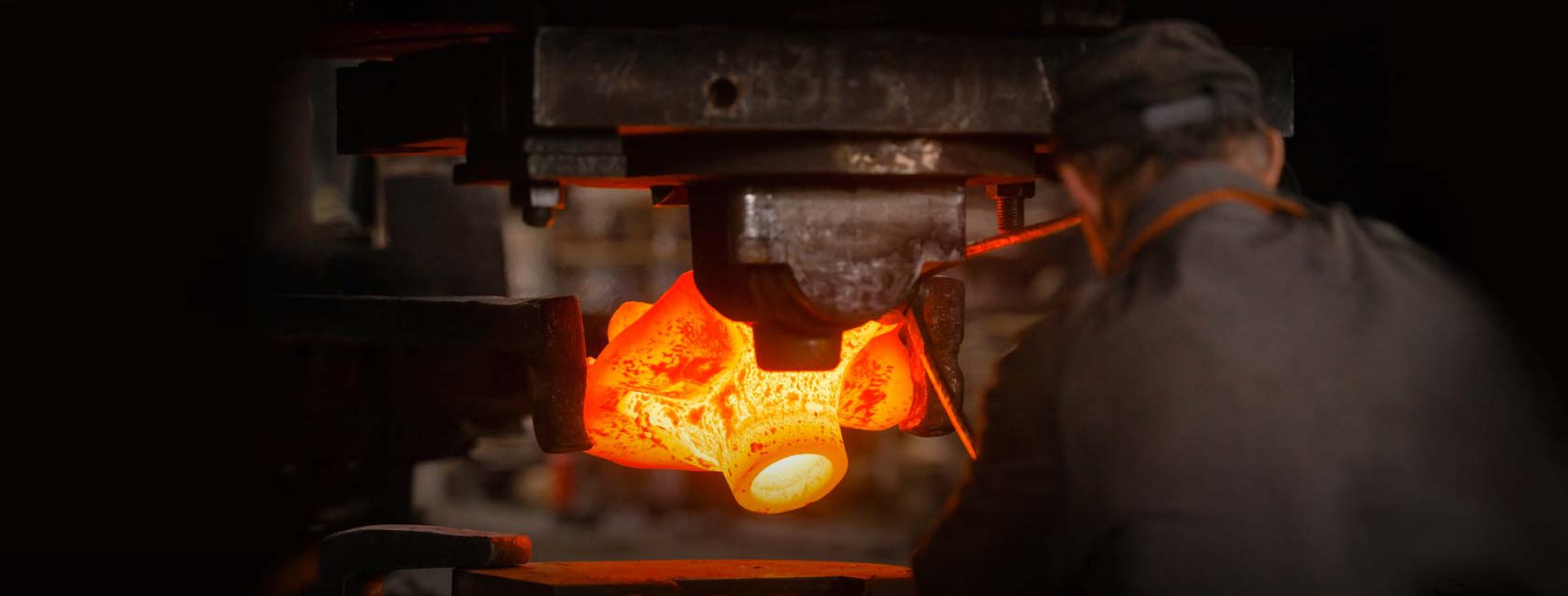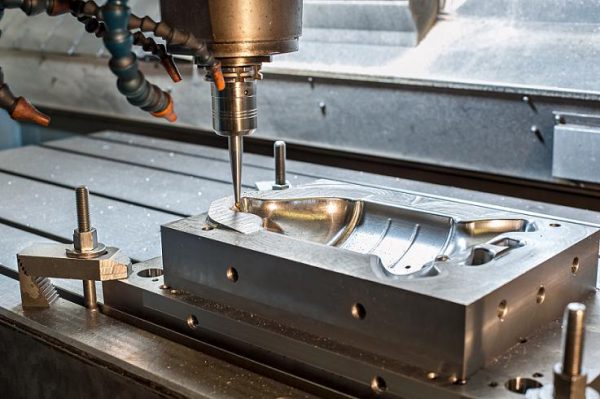
Step 1: Mold Design & Making
The first step of the closed-die forging process is to create a mould. A mould allows us to forge the hot metal into a particular shape which has been specified by the client. We can create various parts out of a variety of different metals in a range of shapes and sizes.
Designing and creating a mould is undertaken using the following steps:
Using CAD (Computer aided design) we produce a 3D drawing from either our customers drawing or a sample. This process is a lot quicker than manual drawings and allows us to move quickly into producing the 3D plastic model.
After confirming the 3D design, it’s time to push forward with the next step. This involves cutting dies and tooling for the manufacture. The mould is made of high hardness tool steel, which maintain their shape at high temperatures. This allows us to produce many forgings from a single mould.
We will first make a trial sample to check the dimensions, and if the testing is all right, we will move on production of forgings. This step of mold design & making usually takes roughly 2-3 weeks.
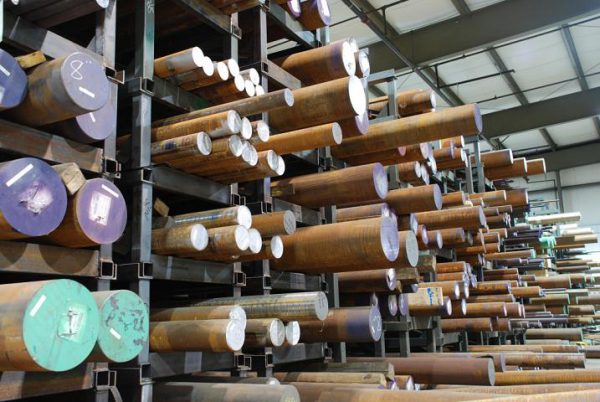
Step 2: Choose the Steel Specification
When designing a part in closed die forging process, designer or purchaser researchs strength and weight factors to decide what kind of material is most suitable.
We offer friendly advice where we see fit, combing our rich closed die forging experience. If a metal is difficult for us to order from raw material factory. We will also discuss this with our client and advise the alternatively one accordingly.
So what steel specifications are available for forging?
Depending what is needed from the part, many factors come into play. Metal can be forged into different strengths or different weights.
Stainless Steel
There are various grades and surface finishes of stainless steel to suit the environment the alloy must endure. Stainless steel is used where both the properties of steel and corrosion resistance are required.
Carbon Steel
As the carbon percentage content rises, steel has the ability to become harder and stronger through heat treating; however, it becomes less ductile. Common used carbon steel grades in forging are: AISI 1020, AISI 1035, AISI 1045, ect.
Alloy Steel
A range of improved properties could be achieved in alloy steels (as compared to carbon steels): strength, hardness, toughness, wear resistance, corrosion resistance, hardenability, and hot hardness. To achieve some of these improved properties the metal may require heat treating.
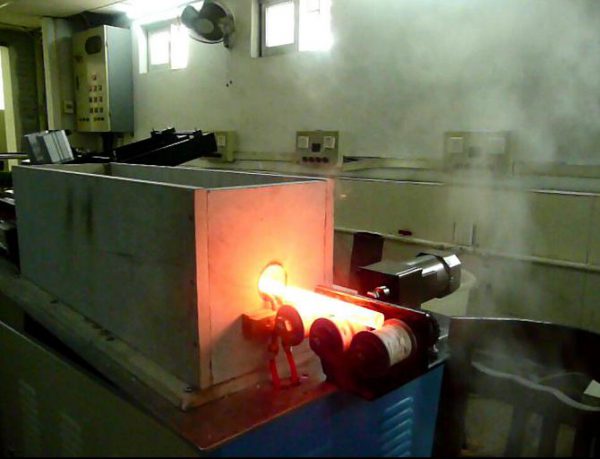
Step 3: Steel Heating
Before forging the steel billet, it needs to be heated to a desired temperature. Steels are made up of atoms which form a symmetrical structure. When the steel billet is heated, it displaces those atoms to form a new structure. This process is known as allotropic phase transformation and can alter the hardness, strength and ductility of the metal.
Even though the atoms are displaced in the forging process, steel grain flow is uninterrupted in the forging process which makes for a stronger part.
The steel is heated in our medium frequency furnace to a certain high temperature. This process usually takes around 10-15 minutes depending on the diameter of the steel. After heating, it is then transported to the forging machine using tongs.
Once it has been heated to the right temperature it can be placed in the moulds. You have around 40 seconds to respond to heated metal before it cools. If the bar drops below a cherry red, it goes back in the furness. If it cools and it doesn’t get reheated there is a possibility it may break.
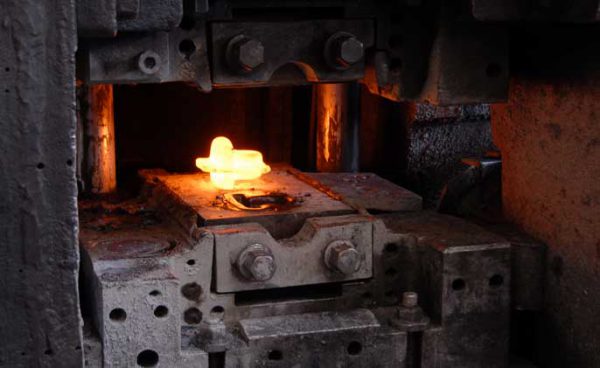
Step 4: Forging the Steel
After the mould has been created and steel heated, the forging process can begin. Firstly it’s heated to the right temperature (as discussed in the previous step) and then it’s ready to be moulded.
It is transported using specialist tongs and placed within the closed-die forging dies. The raw material used is approximately the same size as the finished steel forging part.
The dies come together forcing the impact on the heating steel, pushing it to fill the mold cavity. This action is like a hammering process and the dies close a fair few times until the final shape is fully formed.
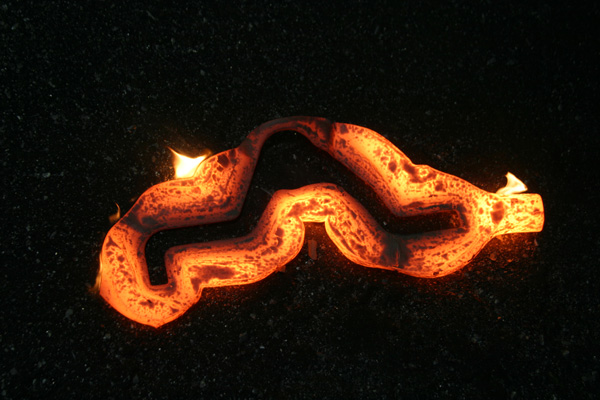
Step 5: Trimming
As the molds are made up of upper die and lower die, so when forging, excess material will come out during the deformation process. We call these excess material around the shape "flash". To obtain net shape forging blanks, such flash needs to be removed. So forgings with flash will be placed in a simply trimming dies in punching machine, and the punching operation will remove the flash directly.
So a obvious difference to tell forging from casting is that we could see a flash around the forgings. Of course, if such flash is not allowed by our customer, we could also remove by grinding. But extra labour cost will be charged.
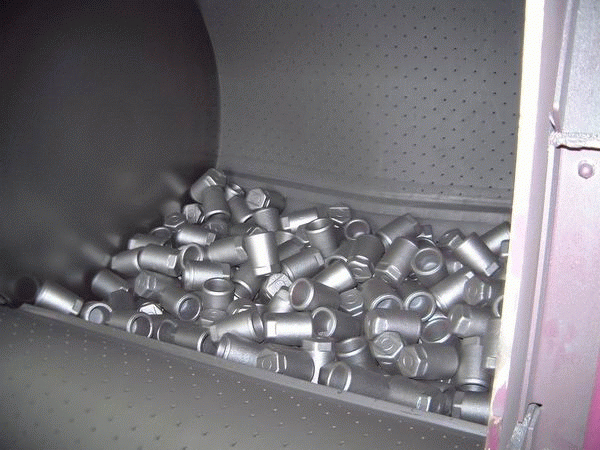
Step 6: Shot Blasting & Other Post Treatments
After forging, the surface of products will exsit scales. So like casting, these closed die forged parts will be shot blasted. Steel balls are always used in shot blasting. For better appearance, steel balls in small dimensions are recommended. And it will take about 20 minutes to finish shot blasting job.
Other required post treatments:
Heat Treatment
Heat treatment is used when there is any requirement for higher mechanical properties. Widely used heat treatments in closed die forging are: Normalization, tempering & hardening, carburizing treatment, nitridation treatment, etc.
Surface Treatment
Especially surface treatment may also be operated, such as painting, HDG(hot dip galvanizing), powder coating, etc.
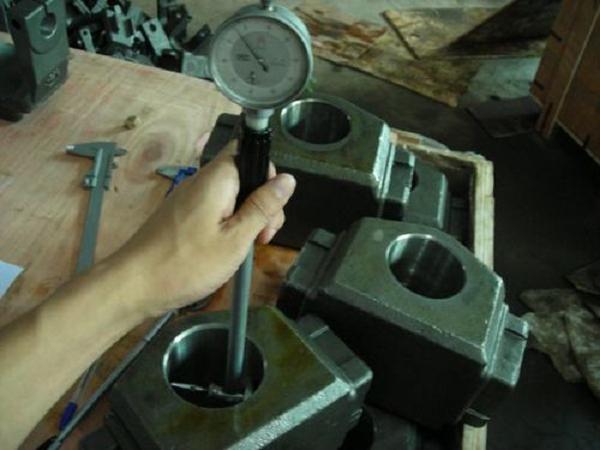
Step 7: Inspection
As a closed die forging company that has been around for over 30 years in China, we have worked on key principles which have made us a success. One of those principles which hold a great deal of merit is quality control. Therefore we put a large amount of effort into making sure each forged part is to the highest of standards.
All parts need to be to the exact specifications for them to be suitable for their requirements. How do we achieve such high levels of quality throughout the process?
We need to have a high level of quality along with consistency on all forged parts. To be able to reach those levels we put a large amount of resources into system control and carry out a range of inspections.
Each part is controlled by using a batch card which indicate every process the part has to go through; this allows us to monitor each part of the journey. This also allows us to easily identify any issues and respond accordingly along the way. It prevents us wasting time by allowing unsuitable products to filter through to other stages.
Investing in the latest technology also helps make the parts more accurate as they are less prone to defects.
All parts forged are processed to a specific route and tested in accordance with our clients requirements. For example:
Mechanical Tests
Material Chemical Checks
None Destructive Testing
Final forged part check
All of our products are 100% viewed dimensionally checked for compliance prior to despatch to our clients around the world thus insuring CFS' gains a reputation for the forging excellence which further enhances long term relationships.
CFS Forge has been in business since 1995 and has a wealth of experience in a traditional trade which is still relevant today get in touch with us today to discuss your closed-die forging requirements.

